Tumbled marble countertops are known for their distinctive, rustic appearance, offering a timeless elegance that can enhance the aesthetics of any kitchen or bathroom. Unlike polished marble, tumbled marble undergoes a different finishing process that gives it a softer, more textured look. This finish is achieved by tumbling the marble stones in a machine with abrasives, which rounds the edges and creates a worn, weathered surface. The result is a matte, natural-looking stone with subtle variations in color and texture, making it ideal for those seeking a more organic and lived-in feel.
The unique look of tumbled marble countertops is often what draws people to this material. Its soft edges and porous surface give it a character that polished stones simply cannot offer. This textured finish brings an old-world charm to modern spaces, adding warmth and depth to the overall design. In kitchens, tumbled marble can provide a relaxed, inviting feel that complements both traditional and contemporary styles. When paired with other natural materials, such as wood or wrought iron, it can create a harmonious balance between rustic and refined aesthetics.
However, the beauty of tumbled marble comes with certain challenges, particularly when it comes to maintenance. Because the surface is more porous than polished marble, tumbled marble countertops are more susceptible to staining and etching from acidic substances like wine, lemon juice, or vinegar. To protect the surface, regular sealing is essential. Homeowners should apply a penetrating sealant every few months to prevent liquids from penetrating the stone and causing permanent damage. Without proper care, tumbled marble can develop unsightly stains that detract from its natural beauty.
Another consideration with tumbled marble countertops is their durability. While marble is generally considered a strong stone, its tumbled finish can make it more vulnerable to chipping and scratching compared to polished marble. The softened edges of tumbled marble are more prone to damage, especially in high-traffic areas of the kitchen or bathroom. If you’re planning to install tumbled marble countertops in a busy household, it’s important to be mindful of how the surfaces are used. Cutting directly on the countertop, for example, can lead to scratches, so using cutting boards is essential.
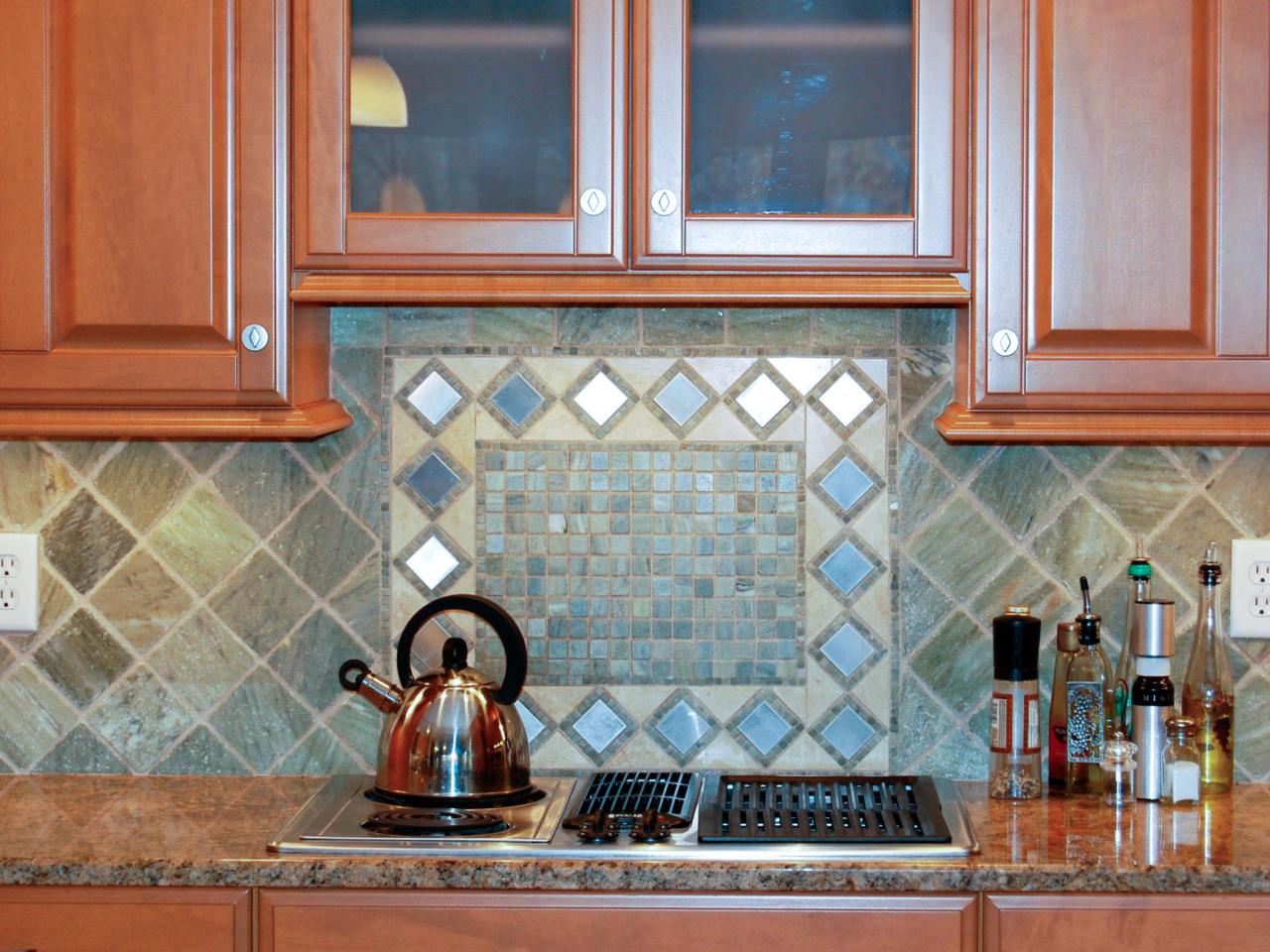
One of the benefits of tumbled marble countertops is their ability to hide minor imperfections. The textured surface makes small scratches, dents, or chips less noticeable compared to polished marble or other smooth countertops. This feature can be particularly advantageous in kitchens or bathrooms where wear and tear are common. Over time, the natural patina that develops on tumbled marble can enhance its rustic charm, giving it an even more authentic and weathered appearance.
The color variations in tumbled marble are another reason this material is so popular. Tumbled marble comes in a wide range of shades, from creamy whites and soft beiges to deeper hues like gray, brown, or even green. These subtle variations in color can add depth and interest to a space, especially when paired with complementary cabinetry or backsplash materials. The natural veining found in marble also adds a level of sophistication and elegance that can elevate the overall design of a room.
When considering tumbled marble countertops, it’s essential to think about the overall design scheme of your kitchen or bathroom. Tumbled marble works particularly well in rustic, Mediterranean, or farmhouse-style spaces where natural materials and a lived-in look are central to the aesthetic. However, it can also be used in more contemporary settings to add texture and contrast. The versatility of tumbled marble allows it to blend seamlessly with various design elements, from sleek modern cabinetry to antique furniture pieces.
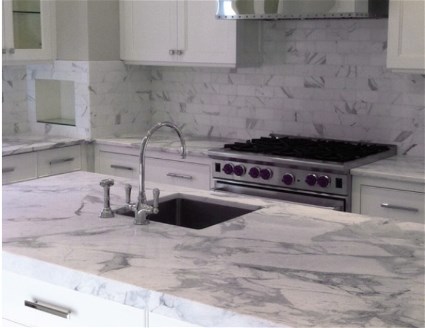
One of the downsides of tumbled marble countertops is their cost. Marble, in general, is considered a luxury material, and tumbled marble is no exception. The cost of the stone itself can be higher than other countertop materials like granite or quartz, and the installation process is often more labor-intensive. Because tumbled marble is softer and more delicate than polished marble, extra care must be taken during installation to avoid damaging the stone. Additionally, the need for regular maintenance, including sealing and careful cleaning, can add to the long-term cost of owning tumbled marble countertops.
Despite the additional maintenance and cost, many homeowners find that the aesthetic appeal of tumbled marble countertops outweighs the drawbacks. The timeless beauty and unique character of this material make it a worthwhile investment for those who appreciate natural stone and want to create a space that feels warm, inviting, and sophisticated. Tumbled marble has been used for centuries in historic buildings and homes, and its enduring popularity speaks to its lasting appeal.
In terms of installation, tumbled marble countertops require a skilled professional who is familiar with working with this type of material. Because the edges are rounded and the surface is uneven, it can be more challenging to achieve a precise fit compared to smoother stones like granite or quartz. A professional installer will ensure that the seams between the marble pieces are as inconspicuous as possible and that the stone is properly sealed to prevent moisture from penetrating the surface.
One of the key factors to consider when choosing tumbled marble countertops is how the surface will age over time. While some homeowners love the idea of a countertop that develops a natural patina, others may prefer a more pristine look. It’s important to understand that tumbled marble will change with use, developing marks and imperfections that contribute to its rustic charm. For those who appreciate a lived-in, antique look, this aging process can be one of the most appealing aspects of tumbled marble.

Another factor to consider is the finish of the countertops. While tumbled marble is typically matte and textured, you can choose to have it honed for a smoother finish. Honed marble has a satin-like texture that retains some of the softness of tumbled marble while offering a more polished appearance. This finish is ideal for homeowners who want the durability and low maintenance of tumbled marble but prefer a slightly more refined look. Honed marble is also less prone to scratches, making it a practical option for busy kitchens.
When it comes to design options, tumbled marble countertops can be paired with various edging styles to enhance their aesthetic appeal. Popular edging options include straight edges for a clean, modern look or more decorative edges, such as ogee or bullnose, for a traditional or rustic appearance. The choice of edging can influence the overall style of the countertops and should be carefully considered about the surrounding cabinetry and decor.
Tumbled marble countertops can also be used in outdoor spaces, such as patio kitchens or bar areas. However, because marble is sensitive to weather conditions, it requires more maintenance in outdoor environments. Sealing the stone regularly and protecting it from extreme weather conditions is crucial to maintaining its appearance and durability. In outdoor spaces, tumbled marble’s textured surface can add a natural, earthy feel that complements the surrounding landscape.
Finally, tumbled marble countertops can be an excellent choice for those who want to create a cohesive design throughout their home. Marble can be used for both countertops and backsplashes, allowing homeowners to create a unified look that ties the kitchen or bathroom together. The texture and color variations in tumbled marble can add depth and visual interest, making the space feel more layered and sophisticated.
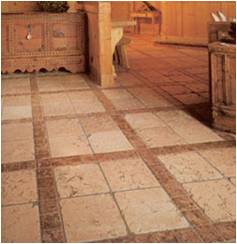
Common Mistakes to Avoid
Skipping the Sealing Process: One of the most common mistakes with tumbled marble countertops is neglecting to seal them regularly. Since marble is porous, failing to seal it properly can lead to stains, water damage, and etching. Always follow a consistent sealing schedule to protect your countertops.
Using Harsh Cleaners: Harsh chemicals, such as bleach or acidic cleaners, can damage the surface of tumbled marble. Use pH-neutral cleaners specifically designed for natural stone to avoid dulling the surface or damaging the sealant.
Not Protecting the Surface: Tumbled marble is more prone to scratches and chips due to its textured finish. Avoid cutting directly on the surface and use trivets for hot pans to prevent heat damage.
Improper Installation: Tumbled marble countertops require precise installation due to their irregular surface. Hiring an inexperienced installer can lead to uneven seams or poorly sealed edges, which can result in long-term issues.
Inconsistent Maintenance: Tumbled marble requires regular care, including sealing and cleaning. Failing to maintain a consistent care routine can lead to permanent stains and discoloration.
Ignoring the Aging Process: Some homeowners expect tumbled marble to retain its pristine look indefinitely. However, this material will develop a patina over time, and it’s important to embrace its evolving character.
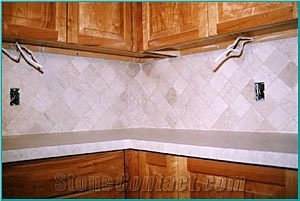
How often should I seal my tumbled marble countertops?
Tumbled marble countertops should be sealed every three to six months, depending on the level of use. High-traffic areas like kitchens may require more frequent sealing to protect against stains and moisture. Always test the surface to determine if it needs sealing by placing a small drop of water on the countertop—if the water absorbs, it’s time to reseal.
Can I use tumbled marble countertops in my kitchen?
Yes, tumbled marble countertops can be used in kitchens, but they require extra care compared to other materials like granite or quartz. The porous nature of marble makes it more susceptible to staining and scratching, so regular sealing and using cutting boards and trivets are essential to maintaining its appearance.
How do I clean tumbled marble countertops?
Clean tumbled marble countertops using a pH-neutral cleaner specifically designed for natural stone. Avoid abrasive scrubbers or harsh chemicals, as they can damage the stone’s surface and remove the sealant. Wipe spills immediately to prevent stains, and regularly dust the surface to maintain its texture.

Is tumbled marble durable enough for a busy household?
While tumbled marble is durable, it is softer and more prone to scratches and chips than other countertop materials. If you have a busy household, consider whether you’re willing to commit to the necessary maintenance. Using protective measures like cutting boards and coasters will help prolong its lifespan.
Can tumbled marble countertops be repaired if they get scratched or chipped?
Yes, minor scratches and chips in tumbled marble can often be repaired by a professional stone restoration expert. In some cases, light sanding and polishing can smooth out the damage, while deeper chips may require filling or replacing the damaged area.
What’s the difference between tumbled marble and honed marble?
Tumbled marble has a more textured, matte finish, while honed marble has a smoother, satin-like finish. Tumbled marble offers a more rustic and natural look, while honed marble is slightly more refined and shows fewer scratches. Both finishes require regular sealing and maintenance, but honed marble may be more forgiving in busy areas.

Tumbled Marble Backsplash and Marble Quartz Looking Countertop
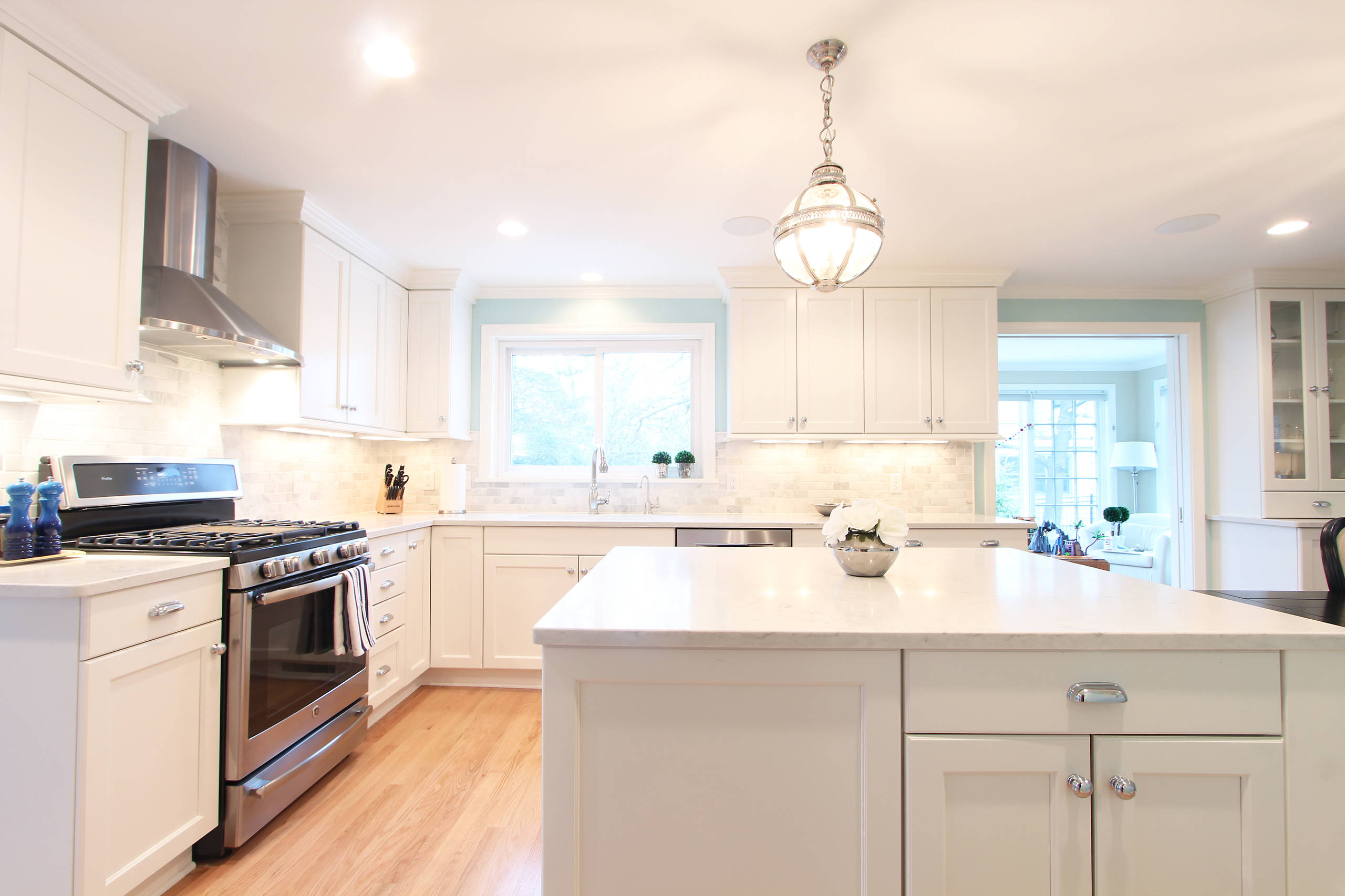
Kitchen and Residential Design: Reader question: Can I paint
Related articles: